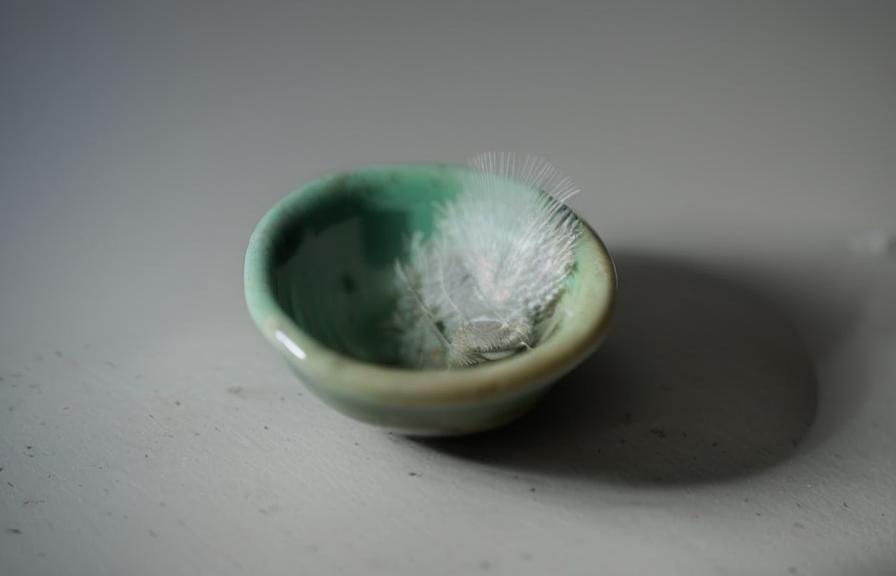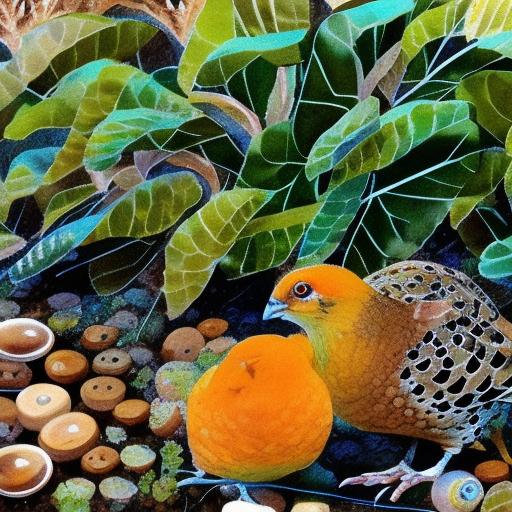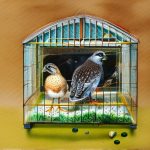Proper breeding cages are essential for the successful breeding of button quail. These small, ground-dwelling birds require specific conditions to thrive and reproduce, and the right breeding cage plays a crucial role in providing these conditions. A well-designed breeding cage ensures the safety, comfort, and well-being of the quail, while also facilitating the breeding process. It provides a controlled environment where breeders can monitor and manage the birds’ behavior, nesting, and roosting activities. Additionally, a proper breeding cage helps to prevent overcrowding, aggression, and stress among the quail, which can negatively impact their breeding success. Therefore, investing in the right breeding cages is a fundamental aspect of responsible button quail breeding.
Furthermore, proper breeding cages contribute to the overall health and welfare of the button quail. These cages should be spacious enough to allow the birds to move freely and engage in natural behaviors such as foraging, dust bathing, and socializing. A well-ventilated cage with adequate lighting and temperature control is also essential for the quail’s physical and psychological well-being. Additionally, the design and materials of the breeding cage should prioritize safety, durability, and ease of cleaning and maintenance. By providing a suitable and comfortable living environment, proper breeding cages can reduce stress-related health issues and promote the overall reproductive success of button quail. In conclusion, the importance of proper breeding cages for button quail cannot be overstated, as they are essential for creating a conducive environment for successful breeding and ensuring the health and welfare of the birds.
Key Takeaways
- Proper breeding cages are essential for the health and well-being of button quail.
- Select a cage that is the right size and type to accommodate the specific needs of breeding button quail.
- Create an ideal environment within the cage by providing appropriate bedding, temperature, and lighting.
- Regularly clean and maintain the breeding cages to ensure hygiene and prevent the spread of diseases.
- Provide adequate nesting and roosting spaces to encourage natural breeding behavior in button quail.
Selecting the Right Size and Type of Cage for Breeding Button Quail
When selecting a breeding cage for button quail, it is crucial to consider the size and type of cage that will best meet the needs of these small birds. The size of the cage is a critical factor, as it directly impacts the quail’s comfort, behavior, and breeding success. A spacious cage allows the birds to move around freely, exercise, and engage in natural behaviors, which are essential for their physical and psychological well-being. The cage should be large enough to accommodate multiple quail pairs without causing overcrowding or territorial disputes. Additionally, the height of the cage should be sufficient to allow the quail to jump and fly short distances, as they are known to be active and agile birds.
In terms of cage type, there are various options available for breeding button quail, including wire cages, aviaries, and custom-built enclosures. Each type has its advantages and considerations, such as ventilation, security, and ease of cleaning. Wire cages are popular for their excellent ventilation and visibility, but they require careful consideration of bar spacing to prevent injury or escape. Aviaries provide a more natural environment with space for plants and perches, but they require more space and maintenance. Custom-built enclosures offer flexibility in design and size but may require more effort in construction and upkeep. Ultimately, the right size and type of cage for breeding button quail should prioritize the birds’ welfare, safety, and reproductive needs. By selecting a suitable cage, breeders can create an optimal environment for successful breeding and ensure the well-being of their button quail.
Setting Up the Ideal Environment for Breeding Button Quail
Creating an ideal environment for breeding button quail is essential for their reproductive success and overall well-being. The environment within the breeding cage should mimic the natural habitat of these ground-dwelling birds while providing the necessary resources for nesting, roosting, and raising offspring. This includes providing a substrate that allows for dust bathing, foraging areas with suitable food and water sources, and hiding spots or shelters for privacy and security. Additionally, the cage should be equipped with appropriate perches or platforms for the quail to rest and roost comfortably.
Furthermore, maintaining suitable lighting and temperature conditions is crucial for creating an ideal breeding environment. Button quail are sensitive to changes in light and temperature, so it is important to provide a consistent light-dark cycle and maintain a stable temperature within the breeding cage. This can be achieved through natural light exposure or artificial lighting, as well as using heating or cooling devices as needed. By setting up an ideal environment that meets the natural behavioral and physiological needs of button quail, breeders can create a conducive space for successful breeding and ensure the well-being of their birds.
Maintaining Cleanliness and Hygiene in Button Quail Breeding Cages
Maintaining cleanliness and hygiene in button quail breeding cages is essential for preventing disease, reducing stress, and promoting overall reproductive success. A clean environment helps to minimize the risk of bacterial or parasitic infections that can affect the health of the quail and their offspring. Regular cleaning of the cage substrate, food and water containers, perches, and nesting areas is necessary to remove waste, uneaten food, and debris that can harbor pathogens or attract pests.
In addition to regular cleaning, proper sanitation practices should be implemented to ensure hygiene in the breeding cages. This includes using safe cleaning agents to disinfect the cage surfaces, equipment, and accessories. It is important to use non-toxic cleaning products that are safe for birds and to thoroughly rinse and dry all cleaned items before reintroducing them into the cage. Furthermore, maintaining good air quality within the breeding environment is essential for the health of the quail. Adequate ventilation helps to reduce moisture levels, control odors, and prevent the buildup of harmful gases such as ammonia.
Overall, maintaining cleanliness and hygiene in button quail breeding cages is crucial for creating a healthy and safe environment for successful breeding. By implementing regular cleaning routines and sanitation practices, breeders can minimize health risks and provide a conducive living space for their birds.
Providing Adequate Nesting and Roosting Spaces for Button Quail
Providing adequate nesting and roosting spaces is essential for creating a conducive environment for breeding button quail. These small ground-dwelling birds require suitable areas within their breeding cage where they can build nests, lay eggs, incubate them, and raise their offspring. Nesting materials such as fine sand or peat moss should be provided to allow the quail to create comfortable nests for egg-laying. Additionally, nesting boxes or shelters can be placed within the cage to offer privacy and security for brooding females.
In addition to nesting spaces, it is important to provide suitable roosting areas within the breeding cage. Button quail are known to roost off the ground at night for safety and rest. Therefore, providing elevated perches or platforms within the cage allows the quail to roost comfortably while also promoting natural behaviors. These roosting spaces should be designed to accommodate multiple birds without causing overcrowding or competition.
By providing adequate nesting and roosting spaces within the breeding cage, breeders can create a comfortable and secure environment that meets the reproductive needs of button quail. This contributes to successful breeding outcomes while ensuring the well-being of the birds.
Monitoring and Managing Breeding Behavior in Button Quail Cages

Monitoring and managing breeding behavior in button quail cages is essential for ensuring successful reproduction and addressing any potential issues that may arise during the breeding process. Observing the behavior of the quail allows breeders to identify signs of mating activity, egg-laying, incubation, and chick rearing. This information helps breeders to track the progress of breeding pairs and anticipate hatching dates or potential challenges.
Additionally, monitoring breeding behavior enables breeders to intervene if necessary to address any issues that may arise during the breeding process. This may include providing supplemental heat or humidity during incubation, removing infertile eggs or addressing aggression between mating pairs. By closely monitoring breeding behavior in button quail cages, breeders can take proactive measures to support successful reproduction while ensuring the welfare of their birds.
Ensuring Safety and Security in Button Quail Breeding Cages
Ensuring safety and security in button quail breeding cages is essential for preventing escapes, predation, or injuries that can jeopardize the well-being of the birds. The design of the breeding cage should prioritize security by using materials that are sturdy and escape-proof. This includes selecting appropriate wire spacing that prevents quail from squeezing through or getting stuck between bars.
Furthermore, it is important to consider potential threats from predators such as cats, rats, or birds of prey when setting up button quail breeding cages. The cage should be placed in a secure location that minimizes exposure to potential predators while also providing protection from extreme weather conditions.
In conclusion, ensuring safety and security in button quail breeding cages is crucial for creating a protected environment that promotes successful reproduction while safeguarding the welfare of the birds. By implementing appropriate safety measures and monitoring potential risks, breeders can create a secure space where button quail can thrive and reproduce successfully.
If you’re interested in button quail breeding cages, you might also want to learn about the mating season for ducks. Understanding the timing and behavior of duck mating season can be crucial for successful breeding. Check out this informative article on Poultry Wizard to gain insights into duck breeding and how it relates to your button quail breeding endeavors.
FAQs
What are button quail breeding cages?
Button quail breeding cages are specially designed enclosures used for breeding and housing button quail. These cages are typically smaller in size compared to regular bird cages and are equipped with features that cater to the specific needs of button quail.
What are the key features of button quail breeding cages?
Button quail breeding cages often have a solid bottom to prevent injury to the quail’s delicate feet, as well as a wire mesh top for ventilation. They also include a nesting area, perches, and feed and water containers. The cages are designed to be easy to clean and maintain.
How should button quail breeding cages be set up?
Button quail breeding cages should be set up with a substrate on the bottom, such as sand or small gravel, to mimic the quail’s natural environment. The cages should also include hiding spots and areas for the quail to nest and lay eggs. It’s important to provide a balanced diet and access to clean water for the quail.
What size should button quail breeding cages be?
Button quail breeding cages should be spacious enough to allow the quail to move around comfortably and exhibit natural behaviors. A good rule of thumb is to provide at least 1 square foot of space per quail. However, larger cages are always better to ensure the well-being of the quail.
Are there any specific considerations for breeding button quail in cages?
When breeding button quail in cages, it’s important to provide separate breeding pairs with their own space to minimize aggression and territorial behavior. Additionally, the cages should be placed in a quiet and stress-free environment to encourage successful breeding and egg-laying.
Meet Walter, the feathered-friend fanatic of Florida! Nestled in the sunshine state, Walter struts through life with his feathered companions, clucking his way to happiness. With a coop that’s fancier than a five-star hotel, he’s the Don Juan of the chicken world. When he’s not teaching his hens to do the cha-cha, you’ll find him in a heated debate with his prized rooster, Sir Clucks-a-Lot. Walter’s poultry passion is no yolk; he’s the sunny-side-up guy you never knew you needed in your flock of friends!







